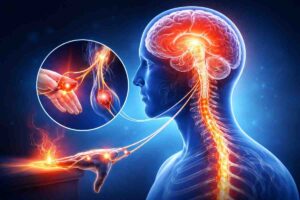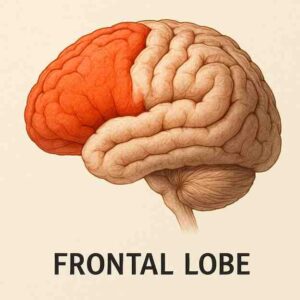All of us have a protective mother that nestles inside us. This Mother’s Day, we salute her resilience and valour.
“We have a 50-year-old man with a large haemorrhage inside his brain and he is unconscious,” came the call from the emergency room. I ran down to the casualty and made an entrance (Hindi movie style) to speak to the family. Sometimes, doctors like to do that, pretend they are important. We push hard on doors, we ring the bell twice, and we take the steps instead of waiting for the elevator. We believe that by doing this, perhaps we can salvage the calamity at hand – and my gosh, how wrong we are sometimes.
“He was watching television when he complained of a severe headache. Before I thought of getting him a paracetamol, he fell to the ground and collapsed,” said his wife, looking nervous amidst the heightened activity around him. I shone a torch in his eye and noticed that both pupils were reacting, but that the right one was larger, a sign that we needed to rush him into the operating room. After I checked that he wasn’t obeying any of the simple commands – a straightforward way to assess consciousness – I dug my fist into his chest in a way to check his response to deep pain and he brought his hands to stop me from doing it, an indicator that he wasn’t completely stuporous.
I scrolled ardently through each slice of the CT scan to discern if there was an underlying pathology for the bleed and suspected it to be the rupture of a right frontal arterio-venous malformation. “We don’t have time to do an angiogram, so let’s see what we find when we open,” I instructed for a swift transfer to the operating room. Within the hour, we had made a large incision on his head shaped liked a question mark. We call it the question mark flap because we often don’t know what we might find inside. We removed the bone flap in a set of quickly mechanized moves, with my assistant and me making the best use of four hands working simultaneously. Surgery is like ballroom dancing; it’s romantic no matter who your partner is.
The dura, which covers the brain and is often crumpled and leathery, was stretched thin to the point of rupture. Usually opaque, it distended such that its silvery white hue had turned transparent, enough for us to see the underlying brain that gnawed angrily at us the moment we cut into it. The brain was under so much pressure that it jumped up a few centimetres and seemed to settle only once we zealously and expeditiously removed a large chunk of the clot. We circumferentially coagulated all the arterial feeders supplying the malformation and finally the abnormal vein that entered the dural venous sinus. The brain looked so much nicer at the end of surgery as compared to before we started. The dura breathed gently as it lay over the now soft and pulsating brain. We kept the bone out in sterile storage; to place it back over the brain a few weeks later, when the brain regained normalcy and the patient was better.
The dura mater, Latin for tough mother is a thick durable membrane that covers the brain. The dura mater is the mother of the brain: mater, rooted in the universal maa, means mother. The primary function of the dura, akin to that of a mother towards its child, is to protect the brain – and what a fabulous job it does of that. Like a mother for her family, the dura guards the brain’s internal environment.
When there is an impact to the head, the dura takes the first brunt, shielding the underlying brain no matter what its age. Over certain parts of the brain, the dura folds over itself to add an additional layer of protection. When certain tumours grow within the folds of the dura and reach ginormous sizes, it almost never gives way by thinning itself out, ensuring that the baby within is not hurt.
The current wave of COVID has unleashed a deadly fungal infection: Mucormycosis. This fungus is seen a few weeks after patients have received steroids to treat their COVID associated pneumonia. It travels up from the nose and decimates the nasal structures, often infiltrating the eye. Were it not for the defensive barrier that the dura provides, almost each such patient would have been dead by brain infiltration from this ghoulish adversary. Like most mothers, however, the dura also has an endurance threshold: at some point, it needs to give way for the child to realize what it is capable of. While it is an extraordinary saviour, it is also a tough teacher.
The dura has venous lakes and channels (sinuses), which carry blood from the brain to the heart. This covering extends all the way down to the spinal cord. It holds cerebrospinal fluid, or CSF, with sanctity. If there is a spontaneous tear in the spinal dura, the CSF can leak out leading to severe headaches, as it is this fluid that maintains the buoyancy of the brain. This kind of headache gets better only on repairing the leak, but some say even after lying down or, strangely, after drinking coffee.
A few weeks later, once the gentleman had made an excellent recovery, we brought him back in to replace the bone. The dura had refashioned itself healing beautifully, a sign of resilience and inner fortitude, just like the mothers we know. We put the bone back as if to say thank you, because those who constantly defend us sometimes need to be shielded too.
So, this Mother’s Day, I wish my mother, the mother of my children, and every mother in the world a happy and awakened Mother’s Day. Whether you are a literal mother or a metaphorical one, the mother of a child or an adult, a pet or a zoo, a home or an organization, you need to be aware that you are our protection and our nourishment. If you are intact, we are safe. Stay strong, stay superb!






0 thoughts on “The Surgical Mother”
Very interesting info!Perfect just what I was searching for!Raise blog range